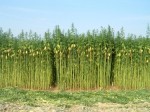 Somalia has untapped reserves of numerous natural resources, including uranium, iron ore, tin, gypsum, bauxite, copper, salt and natural gas. Due to its proximity to the oil-rich Gulf Arab states such as Saudi Arabia and Yemen, the nation is also believed to contain substantial unexploited reserves of oil.
Somalia has untapped reserves of numerous natural resources, including uranium, iron ore, tin, gypsum, bauxite, copper, salt and natural gas. Due to its proximity to the oil-rich Gulf Arab states such as Saudi Arabia and Yemen, the nation is also believed to contain substantial unexploited reserves of oil.
SOMALIA: Somali Government warns illegal companies operating in Somalia
The Ministry of Petroleum and Mineral Resources, Federal Government of Somalia has been closely monitoring the illegal activities of ARC, a Chinese company. ARC has been involved in the illegal digging and mining for minerals in the Simodi mountain ranges in the Awdal region of Somalia. These activities are a violation of Somalia’s territorial integrity and national sovereignty. These activities are also a threat and an immediate danger to the fragile but improving political situation in Somalia
SOMALIA: Demonstrators blame Federal Government inciting clan fightings in Southern Somalia
https://twitter.com/AlgebraPoints/status/402241786015281152
BOKOR UBUNTU in the hemp community.
By the end of 1992 about 350,000 Somalis had died.
Somalia is rich in natural gas and oil. So, if we’re looking at the eventual depletion of our proven oil reserves, Somalia could take on immense importance.
Somalia is a nation of recent origin. Located on the Horn of Africa, it only became a nation in 1960 after the merger of former British and Italian “colonies”. But it has long been an area of strife and conflict, dominated by “foreign powers” for over 100 years.
British, French, and Italian “imperialism” all played a role in the region in the 19th and 20th centuries. The British established a “protectorate” in the northern regions in 1886. Italy established a “colony” in the southern regions shortly thereafter. During World War II the British captured the “Italian colony”. But in 1950 it became a “UN Trust Territory” and Italy returned as the “administering power” for ten years.
In 1991 Somalia had a population of about 7.2 million and an area about the size of Texas.
Here’s a brief history. In 1970 dictator Siad Barre came to power. He was to rule for the next 21 years through brutal oppression and by pitting different clans against each other.
Somalia and the Soviet Union began a “close” relationship in 1966. This lasted until 1976. During that time the Soviets supplied about $600 million worth of arms and military equipment to Somalia. After the Soviet Union pulled out in 1977, the United States became Barre’s primary benefactor.
Somali are divided into six major clans (including the Isaaq of the north, the Ogadeni of the south, and the Hawiye of central Somalia) and thousands of subclans that command people’s primary loyalties and exercise power through temporary alliances with other sub clans.
Traditional clan rivalries were exacerbated by the divide-and-rule policies of Siad Barre, whose regime had one of the world’s worst human rights records.
Related articles
- BOKOR UBUNTU in the hemp community (ustaxpayerswill.wordpress.com)
- Italian Amb to Somalia’s statement on the Cyclone that hit Puntland, Somalia (cyclonehitssomalia.wordpress.com)
- Political #TalkingPoints Conflict Resolution (ustaxpayerswill.wordpress.com)
- Promulgating Irrational Fear A Right Wing Tried and True Divide and Conquer Strategym (ustaxpayerswill.wordpress.com)
- Brief Introduction About the Causes of Civil War in Somalia (somaliaunity.wordpress.com)
- Entry 2 (sagalderia.wordpress.com)






